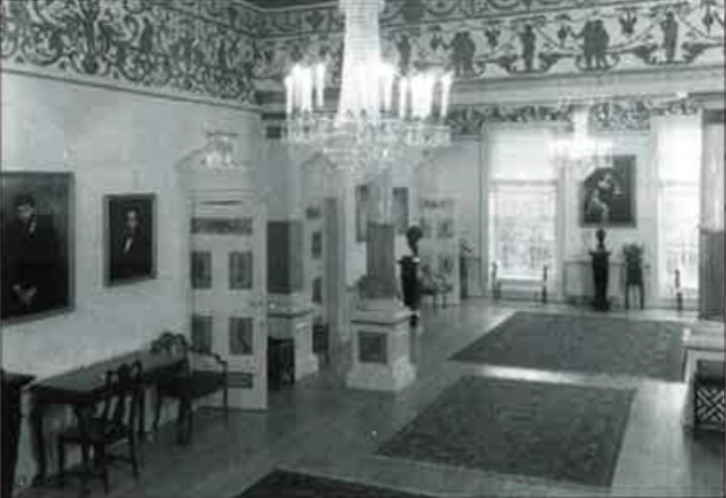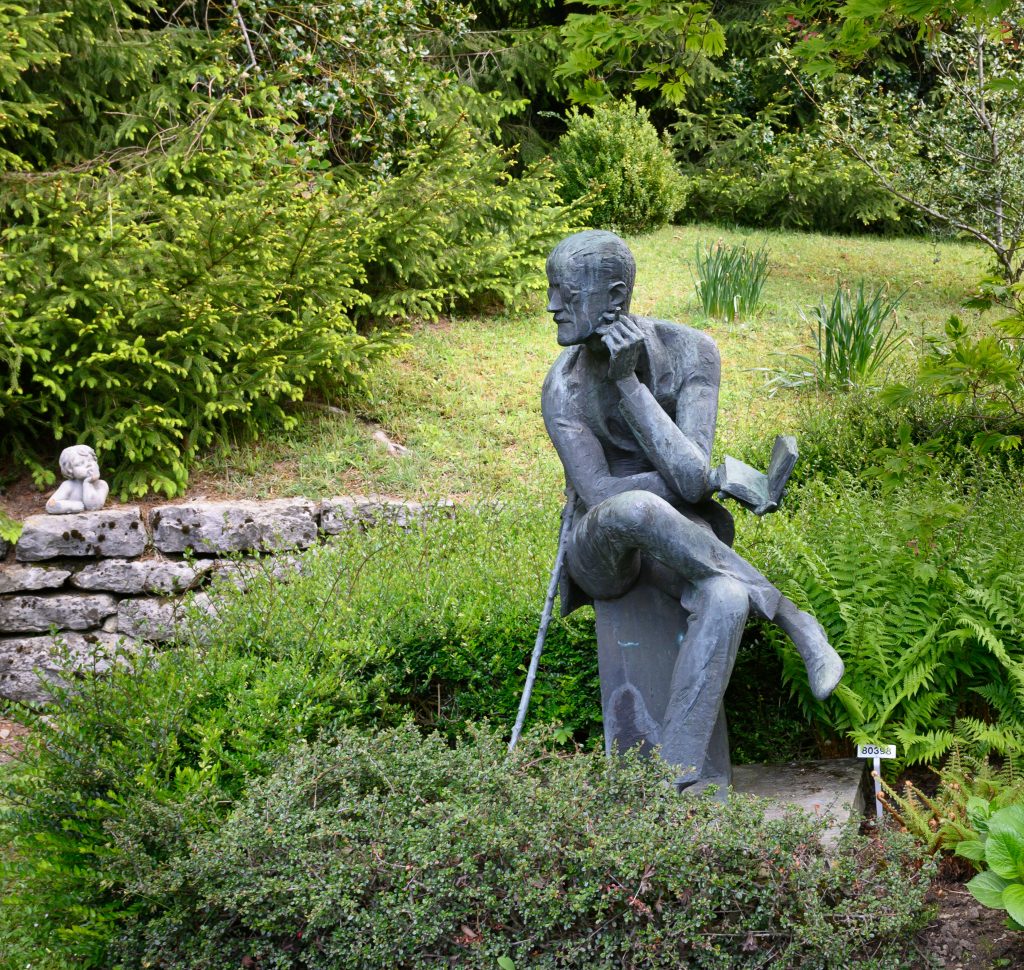Promenade. Ambulate. Ramble, rove, and wander. Trudge. Strut. Meander, stroll and saunter. Call it what you
will, but moving your feet one after the other along the ground all comes down to a very basic physical activity. Walking. It’s one of the things the Irish do best. No matter the time of day, the season, or the weather.
From top to bottom and sea to sea, tiny Ireland is crisscrossed with thousands upon thousands of roads, streets, alleys, lanes, byways and trails. Through the woods and along sandy strands. Over rugged hillsides and into shady glens. Time-worn footpaths trace the edges of crystal clear brooks, straggle through cow pastures to mysterious stone circles, and curl around the ruins of ancient fortifications.
Throughout the island, wherever you travel, one thing is guaranteed. You will encounter people on foot. Going about their daily business, communing with nature, or simply stepping out for a breath of air.
In a nation of walkers, one man stands out — Leopold Bloom, the protagonist of James Joyce’s Ulysses. Set on June 16, 1904, Ulysses records the events of an average day in the lives of three Dubliners: Leopold Bloom, a frustrated advertisement canvasser; his wife Molly, a lusty amateur opera singer; and Stephen Daedalus, a moody poet and part-time teacher at a boys’ school.
It is the saga of a man exiled by loneliness whose search for social, political and ethical fulfillment is thwarted by the situations of his very environment.
Joyce, himself a voluntary exile, left Ireland at the age of 24 and spent the rest of his life in Europe. Except for two brief visits years later, he never again spent time in the city he so loved. But every cobblestone of Dublin’s twisting winding streets was etched in his memory. Joyce once remarked that if the city were ever destroyed, it could be reconstructed from the pages of his novels — Portrait of the Artist as a Young Man, The Dubliners, Finnegans Wake, and Ulysses.
Denounced as vulgar on publication for its sexual content and profanity, Ulysses was banned from distribution for decades. Originally proclaimed trivial for its rambling style, the literary world now acknowledges that the characters’ extensive mental musings set the standard for all future interior monologues. Today, Joyce’s masterwork is hailed as the seminal modernist novel and one of the greatest contributions to world literature.
Bloom’s peregrinations have familiarized readers everywhere with the streets, pubs and monuments (which Bloom calls “street furnishings”) of everyday Dublin. Millions visit the city annually to walk in their hero’s footsteps, and each year on June 16th, known far and wide as Bloomsday, Dublin honors one of its most famous, albeit fictional, sons.

At Number 35 North Great George’s Street, the celebration is especially heady. Built in 1784 for the first Earl of Kenmare, the brick-faced townhouse slowly deteriorated until it became just another neglected post-war tenement building slated for demolition.
In the late 1970s, it captured the attention of Senator David Norris, a passionate architectural preservationist. Aware that Joyce had often frequented the neighborhood, Norris began digging through musty records for evidence that would link Joyce to the property. He struck gold.
In 1904, the building’s ground floor tenant was one Dennis J. Maginnis, proprietor of Maginni’s Dancing School. Joyce describes the self-styled Professor of Dancing and Deportment (who had Italianized his name to lend European cachet to his enterprise) as dressed “in silk hat, slate frock coat with silk facing, white kerchief tie, tight lavender trousers, canary glove and pointed patent boots.”
Site investigation revealed the salon, though in advanced decay, was intact even to delicate plasterwork wall roundels with painted scenes depicting the various types of dancing available including the Tango, the Gavotte, and Irish dancing.
Aided by private and public funding, teams of skilled craftspeople, and archive photographs from the Georgian Society Records, the building has been fully restored.
In the Maginni Room, where the Professor’s students once danced nimbly, a video presentation recounts Joyce’s life and works. The Guinness Reference Library contains an extensive Joycean and Dublin reference collection, the front room houses exhibitions, performances, and the annual James Joyce Film Festival, and a glass-domed cafeteria shares the backyard with The Ulysses Experience. Its prize exhibit is a blue Georgian door, all that remains of Number 7 Eccles Street. Formerly the residence of Joyce’s friend John Francis Byrne, the building is long gone, but its glory lives on. As the fictitious home of Leopold Bloom, it is the most famous literary address in the world.
Fired by its enthusiastic curator Ken Monaghan, Joyce’s nephew, the Center is the focal point of Dublin’s Bloomsday celebration. The 1998 Festival kicks off on June 13th with a reenactment of Paddy Dignam’s funeral, complete with horse-drawn hearse and graveside orations. The week-long schedule includes themed walking tours to places featured in Joyce’s works, and an open top bus tour of Joycean sites through the city complete with dramatic readings and a picnic on Sandymount Strand.
On Bloomsday itself, festivities begin with a public breakfast, the meal that fills Bloom’s thoughts and early morning activities”…kidneys were on his mind as he moved about the kitchen softly, righting her breakfast things on the humpy tray.”
Later, Ken Monaghan will speak about Joyce’s family, followed by a walking pilgrimage through the north inner city where Joyce gathered most of his material. The day closes with an evening concert of words and song.
Many university Joyce Centers and Irish organizations around the United States will also mark the eventful day, as will many pubs, a fact that would please Joyce, the paramount pub crawler, immensely. A handful of authentically recreated Irish pubs known as Fadó (“long ago” in Irish) in cities scattered from the East Coast to Chicago will feature special evening menus and period-costumed performance readings.
Throughout Ulysses, Joyce shows how food is part of one’s daily life, future plans and fantasies. It reflects social class and individual temperament and offers opportunities for personal interaction. It symbolizes sex, and its rituals are interwoven with culture, customs and values.
During lunch, Bloom muses on the foods of the “Creme de la creme,” contrasting them to the “hermit with a platter of pulse,” and concludes that food, like dress, defines personality: “Know me come eat with me.”
If your own peregrinations will not carry you to a site where Bloomsday is being celebrated, you might consider replicating Bloom’s lunch at Davy Byrne’s Pub (still in business at 21 Duke Street, Dublin). With a Gorgonzola cheese and mustard sandwich and a glass of Burgundy in hand, open a copy of Ulysses to the final chapter. Though, like the author himself, Daedalus and Bloom are filled with angst, Joyce devotes this chapter of his epic tale to the feminine regenerative principle of the universe.
It is no coincidence that Joyce chose June 16th, 1904 as the day for Bloom’s pensive perambulation for that was the very date on which Joyce met Nora Barnacle, his lifelong love and inspiration. In the chapter’s final pages, Molly Bloom’s famous soliloquy, one long uninterrupted sentence describing her first amorous encounter with Bloom, ends with the word “Yes” — Joyce’s conclusive affirmation of life and the power of love. Slainte!
Editor’s Note: This article was originally published in the May/June 1998 issue of Irish America. The locations named in this article may no longer exist. ⬥
Recipes
Liver Slices Fried with Crust Crumbs & Bacon
4 thin slices of calf liver
1 cup dry bread crumbs seasoned with black pepper and paprika
4 slices smoked Irish bacon
2 medium onions, thinly sliced
1 tablespoon butter
1 cup beef broth
1 bay leaf
1 teaspoon cornstarch
Dredge liver in seasoned bread crumbs and set aside. In a heavy skillet, brown bacon until limp but not crisp, then set aside on a warm plate.
Gently cook the onion in the bacon fat until soft and set aside with the bacon. Add butter to the skillet, increase heat slightly, and saute liver on both sides. Reduce heat, add beef broth and bay leaf. Cook slowly for 15 minutes. When the liver is tender, set aside with bacon and onions.
Raise heat to medium, sprinkle cornstarch into the pan juices, and stir until it has the consistency of gravy. Pour “bogswamp brown trickles of gravy” over the liver slices, bacon, and onions. Makes two servings.
- The Joyce of Cooking by Alison Armstrong


Leave a Reply